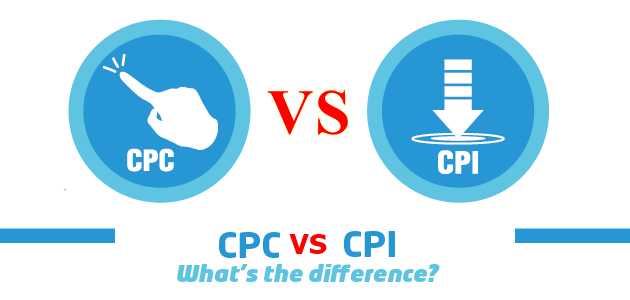Cost Per Click (CPC) Vs Cost Per Impression (CPI) – What Is Your Take?

Posted On :June 1, 2016
/Categorized In : Mobile Advertising / PPC ADS
/Written By : Shabana Gandhi
Human beings spend almost 50 percent of their day’s time online, visiting websites, emails, social media etc. With that, we are likely to see ads (image/text/video). Online advertisements mean to drive profits through ad posting, in websites or social media.
There are the two important ways, which advertisers could use to drive traffic/visibility to their website, i.e. Cost per Click (CPC) & Cost per Impression (CPI). Let’s learn about them one by one with examples.
Cost Per Click (CPC)
Also called Pay per Click (PPC), this is an effective method of online advertising. Here, the advertiser pays money based on the number of clicks on the advertisement. You need to consider a few things before choosing this strategy, as the clicks would mean an interaction between potential clients and your company. You are paying exactly for this so you need to consider:
How much you are paying?
The type of attention you are going after?
The value you are receiving?
The advertiser pays money to publishers depending on a formula or a bidding process. Publishers look for third party matches to find advertisers like Google AdWords or Microsoft Bing Ads. They contract with these companies which in turn have complex algorithms to calculate what type of traffic is coming from where. If the advertiser’s product matches the type of traffic then Bingo, there’s a match.
Once posted, the ads will remain on the website for as long as the advertiser has bid to pay. For example, if a website’s CPC rate is 1 INR, 100 clicks would mean 100 INR (1 x100). Depending on the bid, the advertiser has to pay.
Cost Per Impression (CPI)
This is also known as Cost per Thousand Impressions (CPM) where M stands for Roman numeral 1000. This is the rate an advertiser has agreed to pay for every thousand times the ad is viewed. Basically, every appearance of the ad to users counts as impressions. The price is set based on every 1000 views. Only views, not clicks matter here.
The ad servers monitor the impressions and adjust the display rate to match an advertiser’s spending. CPI’s pricing representation is similar to that of printed ads.
For example, if a publisher charges 10 INR CPM, the advertiser has to pay 10 INR for thousand views. Simple, isn’t it! Usually, large websites use CPM to sustain a stable visibility of their product. A publisher prefers this because they are getting paid only for the views and not clicks.
Which One To Prefer?
Well, it largely depends on your sales. If sales are good and the ad isn’t effective, then CPC is your friend. The clicks match you with potential customers/clients. But, if ads are good but sales, not so lovely, CPM would help get some viewers as well as clicks (imagine 100 clicks per 1000 views). This could work great as the views could get you clients.
Therefore, CPC and CPM are two sides of the same coin. Both have promising results and drawbacks. It largely depends on your marketing schemes. Also, optimizing ads based on performance would be excellent, like you could change ad texts, image parts, ad positions etc. These things do have a strong effect on the viewers.
Article Source: http://EzineArticles.com/expert/Shabana_Gandhi/2034274
Checkout our services:
Mobile-First is a Must: Trends in Indian eCommerce Website Design How Local SEO Can Increase Walk-Ins & Sales for Businesses in Delhi How to Build Brand Credibility with Social Media Marketing How Professional SEO Services Help Industrial Websites Rank Higher How SEO Services Can Enhance Your Business’s Online Reputation in Delhi

